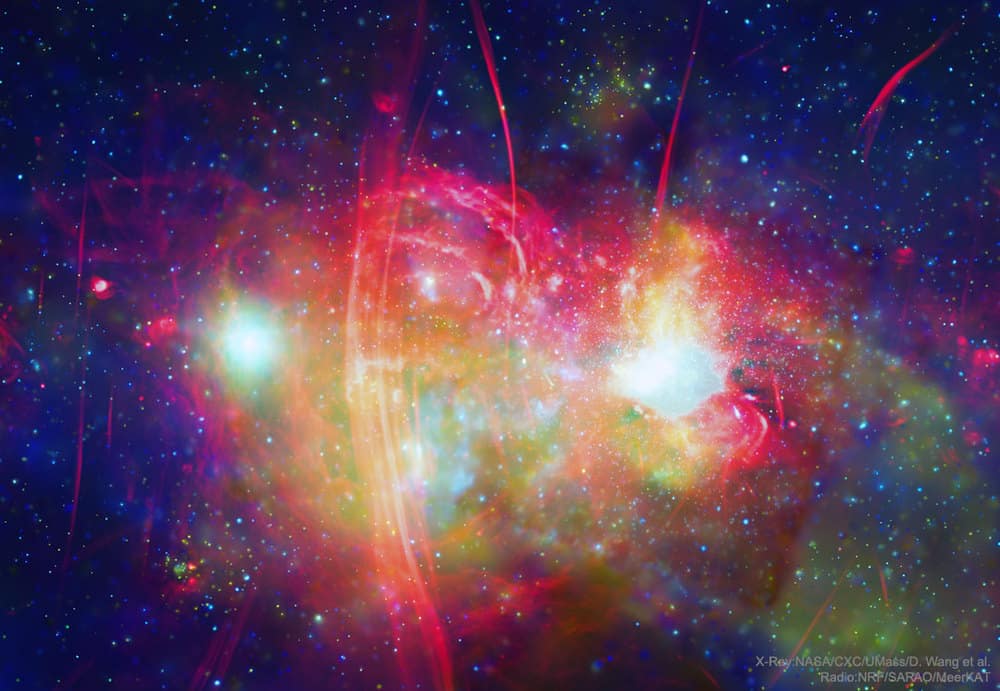The Cosmos with Sagittarius A
This enigmatic region, about 26,000 light years away toward the constellation of the Archer (Sagittarius), glows in every type of light that we can see. In the featured image, high-energy X-ray emission captured by NASA’s orbiting Chandra X-Ray Observatory appears in green and blue, while low-energy radio emission captured by SARAO‘s ground-based MeerKATtelescope array is colored red. Just on the right of the colorful central region lies Sagittarius A (Sag A), a strong radio source that coincides with Sag A*, our Galaxy’s central supermassive black hole. Hot gas surrounds Sag A, as well as a series of parallel radio filaments known as the Arc, seen just left of the image center. Numerous unusual single radio filaments are visible around the image. Many stars orbit in and around Sag A, as well as numerous small black holes and dense stellar cores known as neutron stars and white dwarfs. The Milky Way’s central supermassive black hole is currently being imaged by the Event Horizon Telescope.
Sagittarius A* (pronounced “Sagittarius A-Star”, abbreviated Sgr A*) is a bright and very compact astronomical radio source at the center of the Milky Way, near the border of the constellations Sagittarius and Scorpius about 5.6° south of the ecliptic. It is the location of a supermassive black hole, similar to those generally accepted to be at the centers of most if not all spiral and elliptical galaxies.
Observations of a number of stars orbiting around Sagittarius A*, most notably the star S2, have been used to provide evidence for the presence of, and produce data about, the Milky Way’s hypothesized central supermassive black hole, and have led scientists to conclude that Sagittarius A* is beyond any reasonable doubt the site of that black hole.
